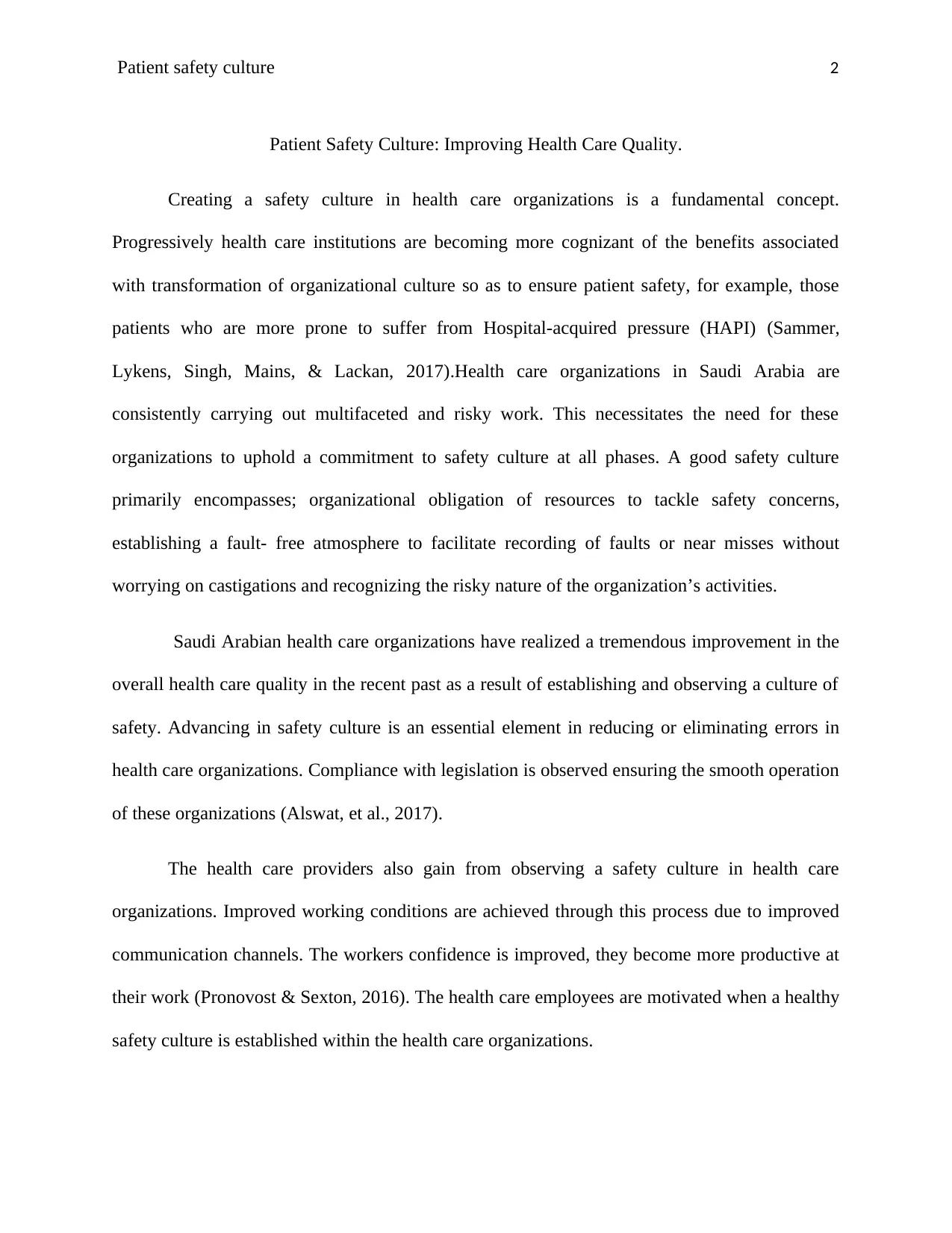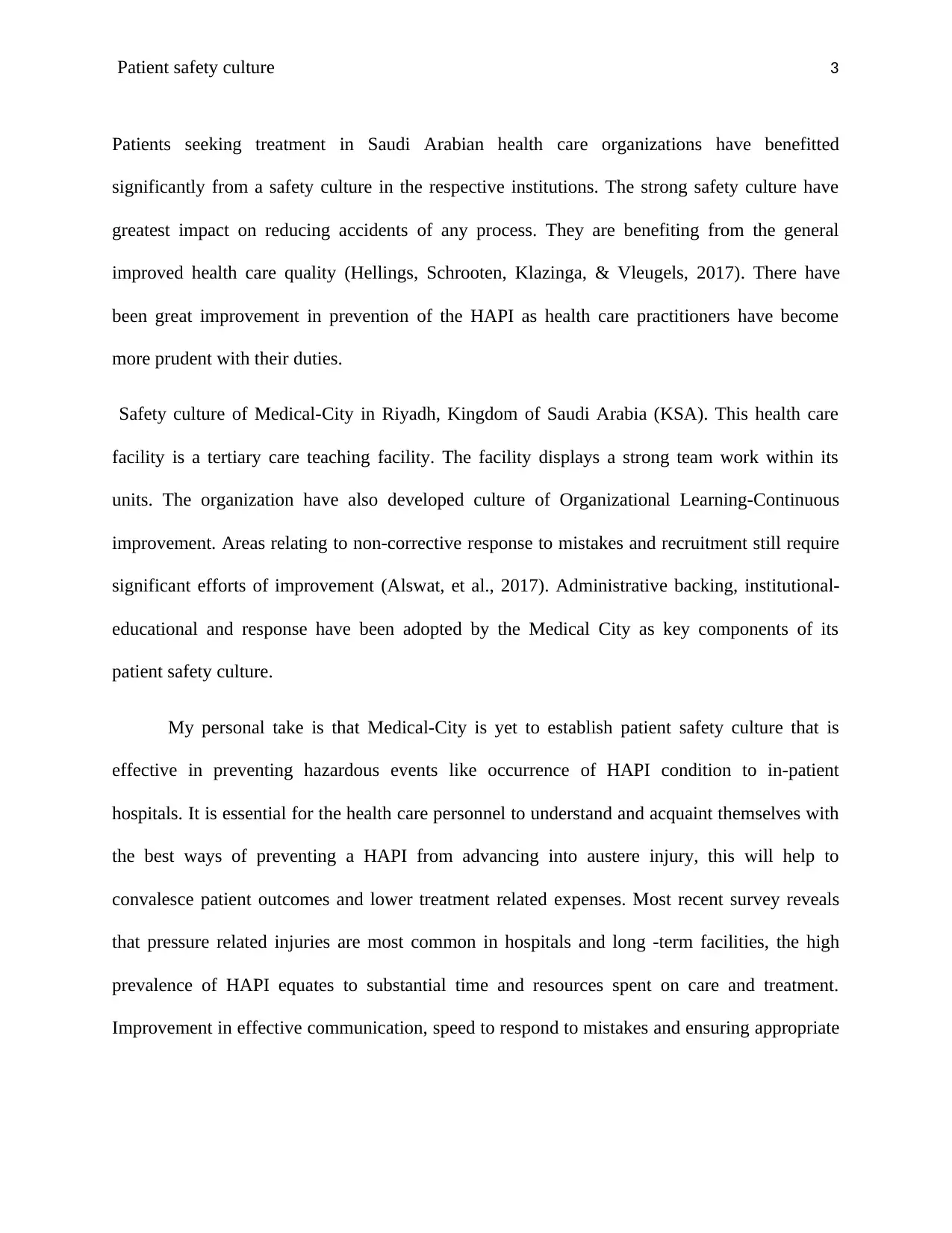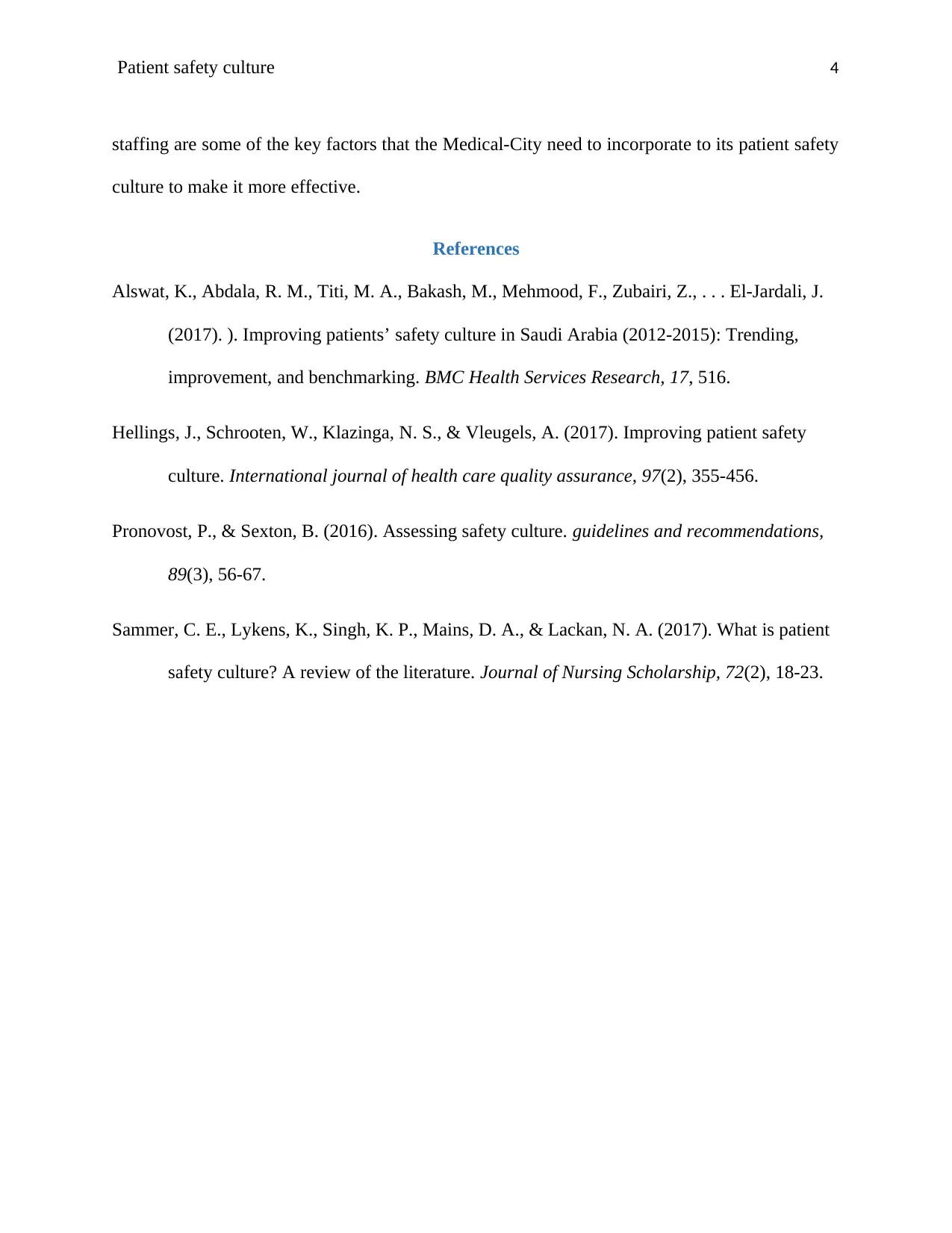Patient Safety Culture: Importance for Saudi Healthcare, Benefits
VerifiedAdded on 2022/11/17
|4
|814
|135
Discussion Board Post
AI Summary
This discussion post delves into the critical importance of fostering a robust patient safety culture within Saudi Arabian healthcare organizations. It highlights the multifaceted benefits for all stakeholders, including improved healthcare quality, enhanced working conditions for medical employees, and better patient outcomes. The post emphasizes the role of organizational commitment, a fault-free environment, and acknowledging the risky nature of healthcare activities. It provides a case study of Medical-City in Riyadh, KSA, discussing its strengths and areas needing improvement, particularly in preventing hazardous events like Hospital-Acquired Pressure Injuries (HAPI). The analysis underscores the need for effective communication, swift responses to errors, and appropriate staffing to enhance patient safety and reduce healthcare costs. The post references relevant research to support its arguments.
1 out of 4











![[object Object]](/_next/static/media/star-bottom.7253800d.svg)